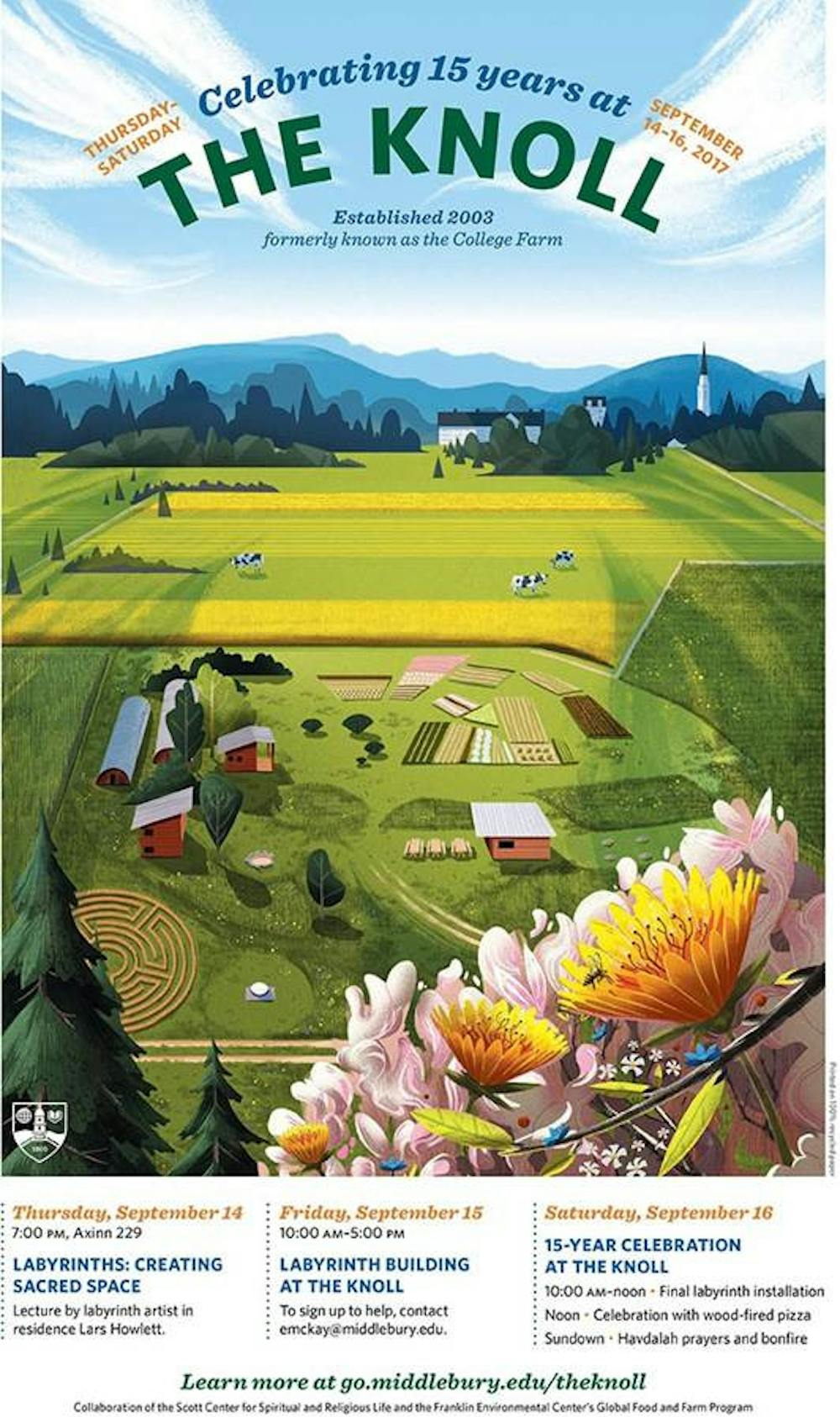A new walking meditation labyrinth will be installed between Sept. 14 and Sept. 16 at The Knoll, also known as The Farm or Organic Garden. This project is a collaboration between the Scott Center for Religious Life, The Knoll and the Mindfulness Initiative.
The construction of the maze will celebrate The Knoll’s 15th anniversary. Labyrinth designer and builder Lars Howlett will serve as the labyrinth’s artist-in-residence, where he will share his experiences and craft.
Construction of the labyrinth will take place today from 9:30 a.m. to 5:30 p.m. at The Knoll. Volunteers are encouraged to sign up for 90 minute shifts, and can do so by contacting Ellen McKay, a program coordinator at the Scott Center.
The final steps for labyrinth installation will take place Friday from 9 a.m. to 12 p.m. Saturday is the official anniversary of the farm, and pizza will be served. That same evening, Havdallah (Jewish evening prayers) and a bonfire will begin at 8:30 p.m. in the same location.
“The idea for a Labyrinth matched the vision that Sophie Esser Calvi, Jay Leshinsky, and others had for The Knoll,” said Mark Orten, director of the Scott Center, and dean of spiritual and religious life. “They wanted to expand use and experience of The Knoll beyond farming and things tied to the land.”
According to their webpage, The Knoll’s mission is to “use food as a medium to cultivate well-being in people, place, and the planet.” The Knoll tries to accomplish these goals through three focus areas: The Educational Garden, Pizza Kitchen and The Serenity Garden. The Serenity Garden, collaboration with The Scott Center, is home to a large, round marble bench blessed by the Dalai Lama in 2012. The labyrinth, in celebration of the Knoll’s 15th anniversary, will be added to the Serenity Garden.
“Jay Leshinsky, the farm educator, and I have always wanted a Serenity garden,” said Sophie Esser Calvi ’03, associate director for global food and farm programs. “When the Dalai Lama came, we knew that blessing the bench would mark the beginning of that space. We felt that a labyrinth is a symbolic way to honor the past and future of this special place.”
In discussing the background and history of the labyrinth, Orten said construction of The Knoll’s labyrinth was based on ancient designs from all over the world.
“There are labyrinths found in parts of the world that are quite remote and go back way before the one that is the model for what we’re doing,” he said, specifying that his inspiration came from an accidentally discovered labyrinth in the Chartres Cathedral in France.
“When they finally discovered what [the labyrinth] was, they pieced together that it was the final part of a journey that monastics would take for many hundreds of miles. This last part of their pilgrimage concluded with walking this labyrinth, sometimes on their knees, to the very center.”
Otren clarified that a labyrinth is different from a maze.
“A maze is something that requires left-brain thinking where you make decisions,” he said. “A labyrinth is the opposite. It’s a unicursal path to a center, or some mid-point that one takes. There are no decisions to make. It’s labyrinthian. It’s winding. It’s back-and-forth, to and fro in a way that can actually seem disorienting if one is trying to make sense of it.”
Orten added that walking a labyrinth can be a powerful experience.
“It is quite a spiritual experience to go to the center of the labyrinth and spend a period of time there, meditating on whatever it is that we’ve set as our intention, and then to walk the same unicursal path back out,” he said. “Usually, people pause at the end of it, and turn back to the labyrinth, and give thanks or some kind of appreciation for the experience. It’s profound in that the labyrinth is never walked the same way twice, no two people walk it the same way, and no person walks it the same way twice.”
Esser Calvi hopes that the space provides a peaceful destination for students.
“We hope The Knoll grows as a place students can go to for refuge and restoration,” she said. “It was planted 15 years ago, as a space to ground one’s self. We believe that cultivating the wellbeing of one’s self is essential to the wellbeing of anything else.”



